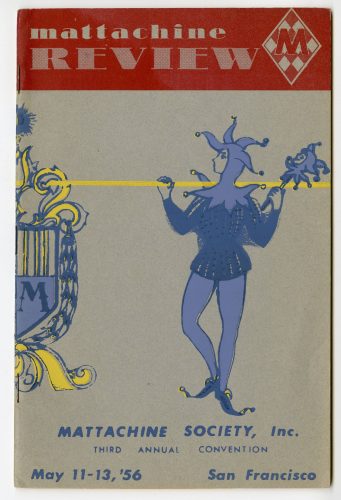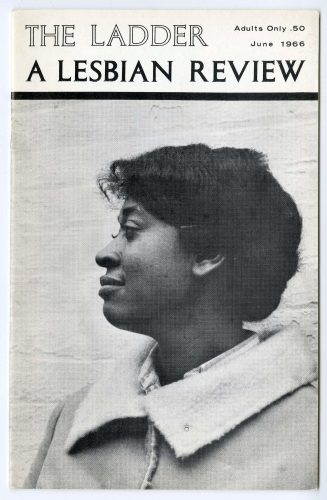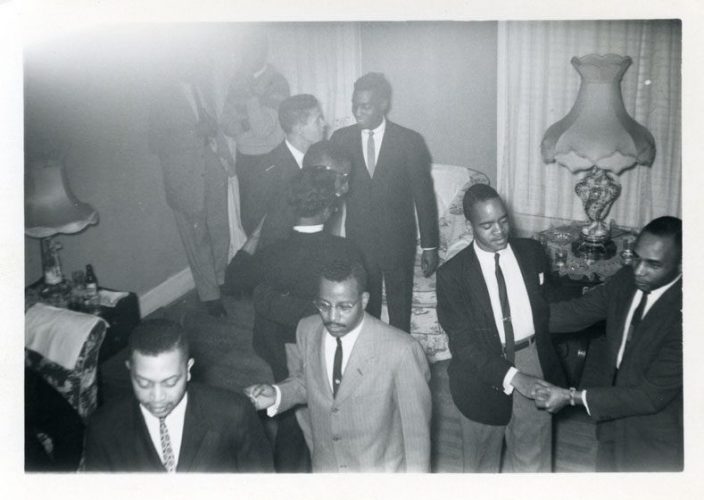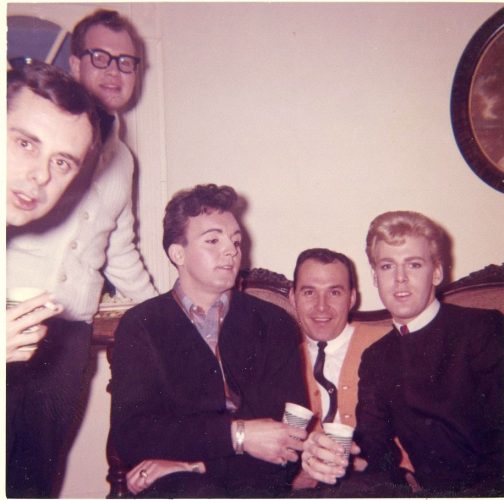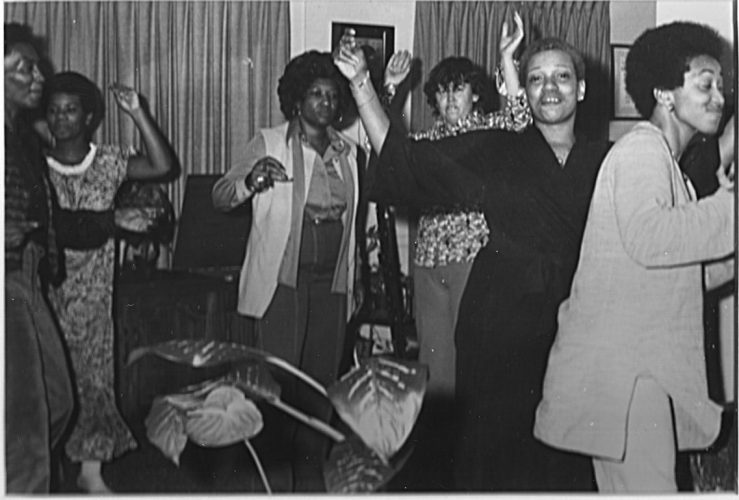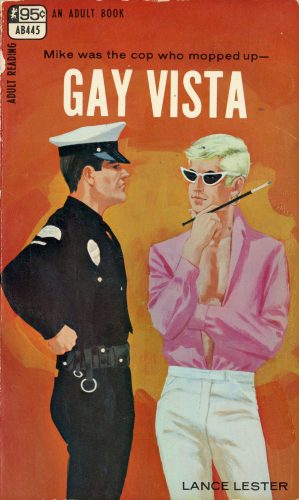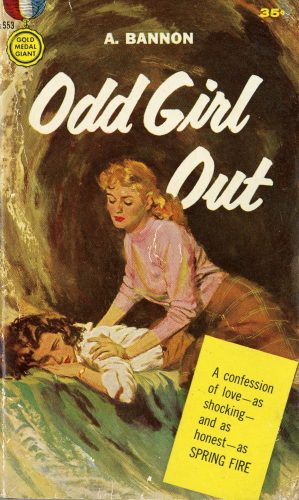Barred from the military and government work, considered criminals and deviants, and scorned for their sexual orientation, most LGBT people—seeking protection—tried to make themselves “invisible.” In Philly and other major cities, though, some cautiously created underground social networks and a rich, if hidden, subculture.
Behind Closed Doors
“. . . there was no such thing as coming out or being out. The very idea of being out—it was ludicrous. . . . There was no out. There was just in.”
—writer Eric Marcus, talking about the 1950s and ’60s
In 1950s California, a small group of gay men founded the Mattachine Society to advocate for their rights; a handful of lesbians organized the Daughters of Bilitis as a secret social club. Both “homophile” organizations, as they called themselves, evolved into multi-chapter, activist organizations with their own publications.
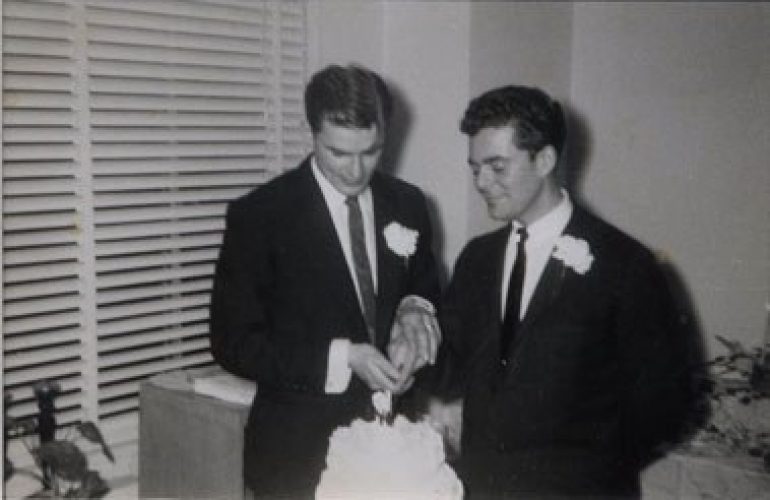
Photograph of male couple in private wedding ceremony in Philadelphia, 1957. John J. Wilcox, Jr. Archives.
Legal marriage was out of the question for same-sex couples in the 1950s. But some LGBT people used the celebration to express their love and commitment—like this couple. Their names are not known.
“I had a lot of trouble getting plugged into the gay community. I spent agonizing years trying to find a comfortable social life, and the bars were the only place I had to start looking. Since I didn’t have much money and didn't like to drink anyway, I’d hold a glass of ice water and pretend it was gin on the rocks.”
—activist Barbara Gittings, on the difficulties of finding her place in 1950s Philadelphia
Private house parties were a way to socialize without fear of police harassment. Often, they reflected the race, gender, and class divisions of the day.
Reading was a way to learn who you were—and that there were others like you—at a time when information about homosexuality was scarce. Many lesbians found a copy of Radclyffe Hall’s 1928 novel, The Well of Loneliness. Both men and women furtively bought gay-themed pulp fiction at newsstands. Some gained access to Donald Webster Cory’s 1951 sociological study, The Homosexual in America.
“Society has handed me a mask to wear . . . . Everywhere I go, at all times and before all sections of society, I pretend. . . . I realize that its greatest repercussion has been the wave of self-doubt that I must harbor.”
—Donald Webster Cory, The Homosexual in America, 1951
